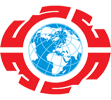Population change and functional structure of Pančevo
Book 83
ISBN 978-86-80029-53-5
Year of publishing: 2011
Authors: Vesna Lukić
Editor: Željko Bjeljac
The most important factor that affects growth and development of Pančevo is immediate vicinity to Belgrade as administrative and largest economic, cultural and university center of the state. Changes in the demographic development and functional structure of Pančevo and the scope, territorial range, and structure of commuting flows in the urban system of Pančevo were influenced by the following:
- geo-traffic and socio-economic status of Pančevo,
- population dynamics and changes in the spatial distribution of population,
- natural and migration component of demographic development,
- changes in the basic structures of the population (socio-economic and biological),
- changes in the number and basic characteristics of households (size of households according to the number of members, family structure and economic characteristics of households),
- changes in the structure and level of development and diversification of the economy, and
- labor market changes.
The analyses have shown that the retention of the resource of the young population who are first-time job seekers is especially important in the municipality of Pančevo. Encouraging the participation of women in the labor market can positively affect the number of working age population. The development of Pančevo was very much affected by traditionally developed industry, represented in large industrial complexes of a wider national significance. Nowadays manifestation of the reforming processes is visible through the continuing growth of the self-employed as well as a tertiary sector on the account of reduction of the secondary one. Considering the ongoing process of economic transition and rapid development of the market economy, faster growth in the sector of services in relation to the production one will still go on. The reduction in the number of employees in the service sector can only be expected in the sphere of education and health, due to the current transition of the national institutions. The results of testing the influence of demographic and socio-economic factors on the average commute one-way travel length in the urban system of Pančevo shows that women on average have shorter commuting trips than men. This confirms findings in the international literature on this subject on shorter traveling of women to work. Women travel on shorter distances than men who are of the same education, work in the same sector of activity and have the same family characteristic. The influence of education on the average commute one-way travel length is noticeable, although it is more so when speaking about the female population.
Full book in Serbian/ Summary on English







